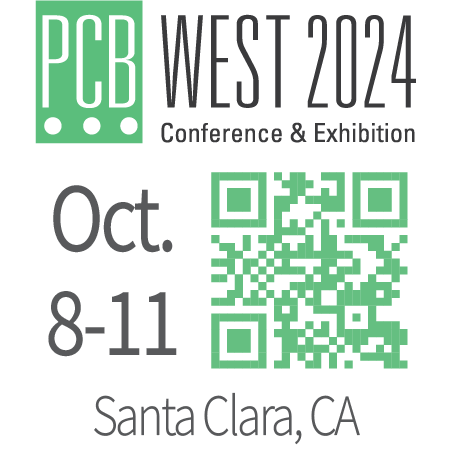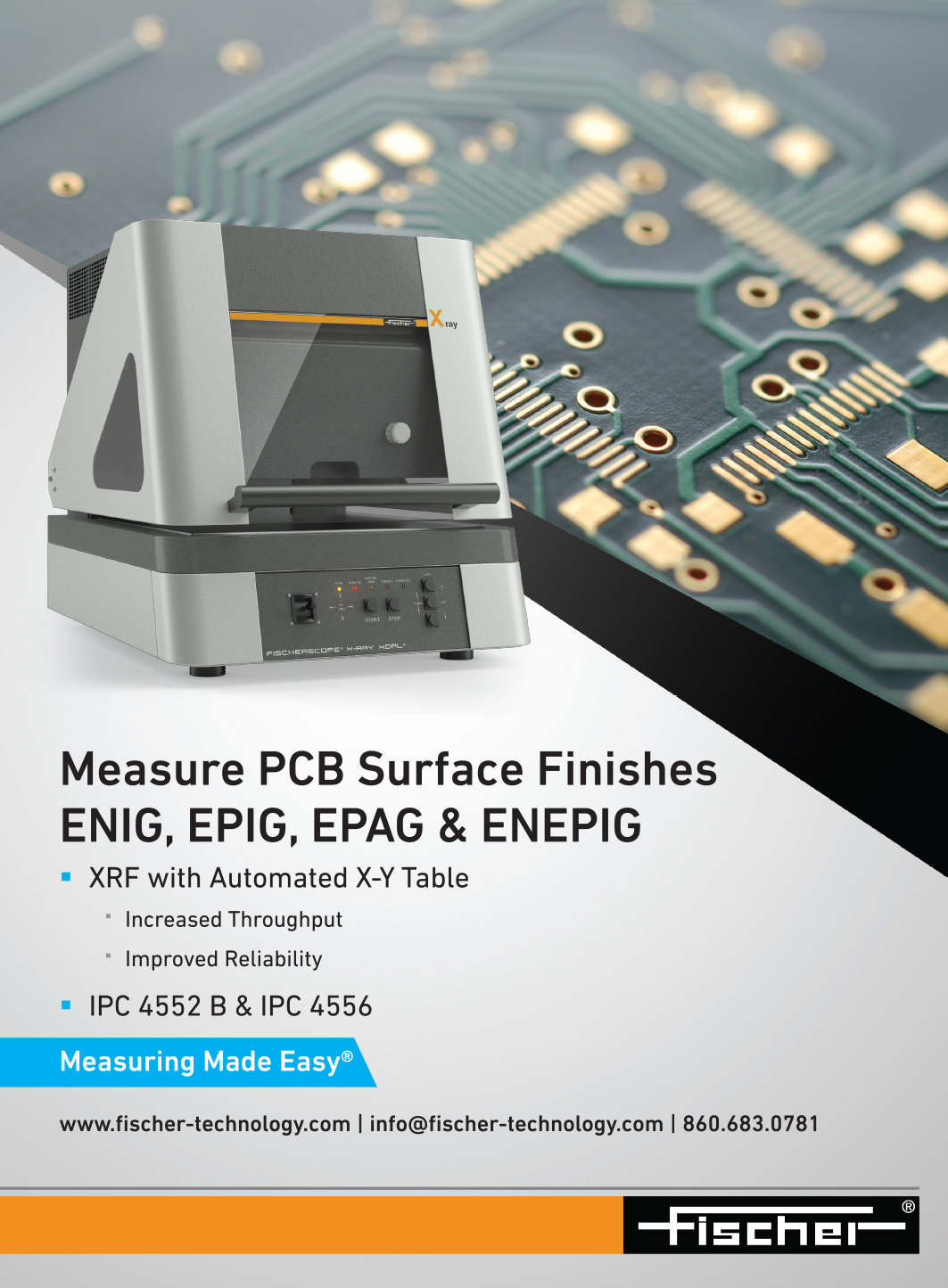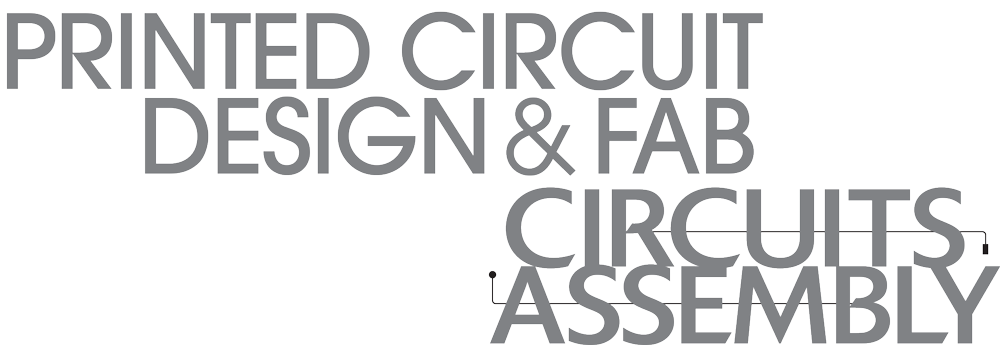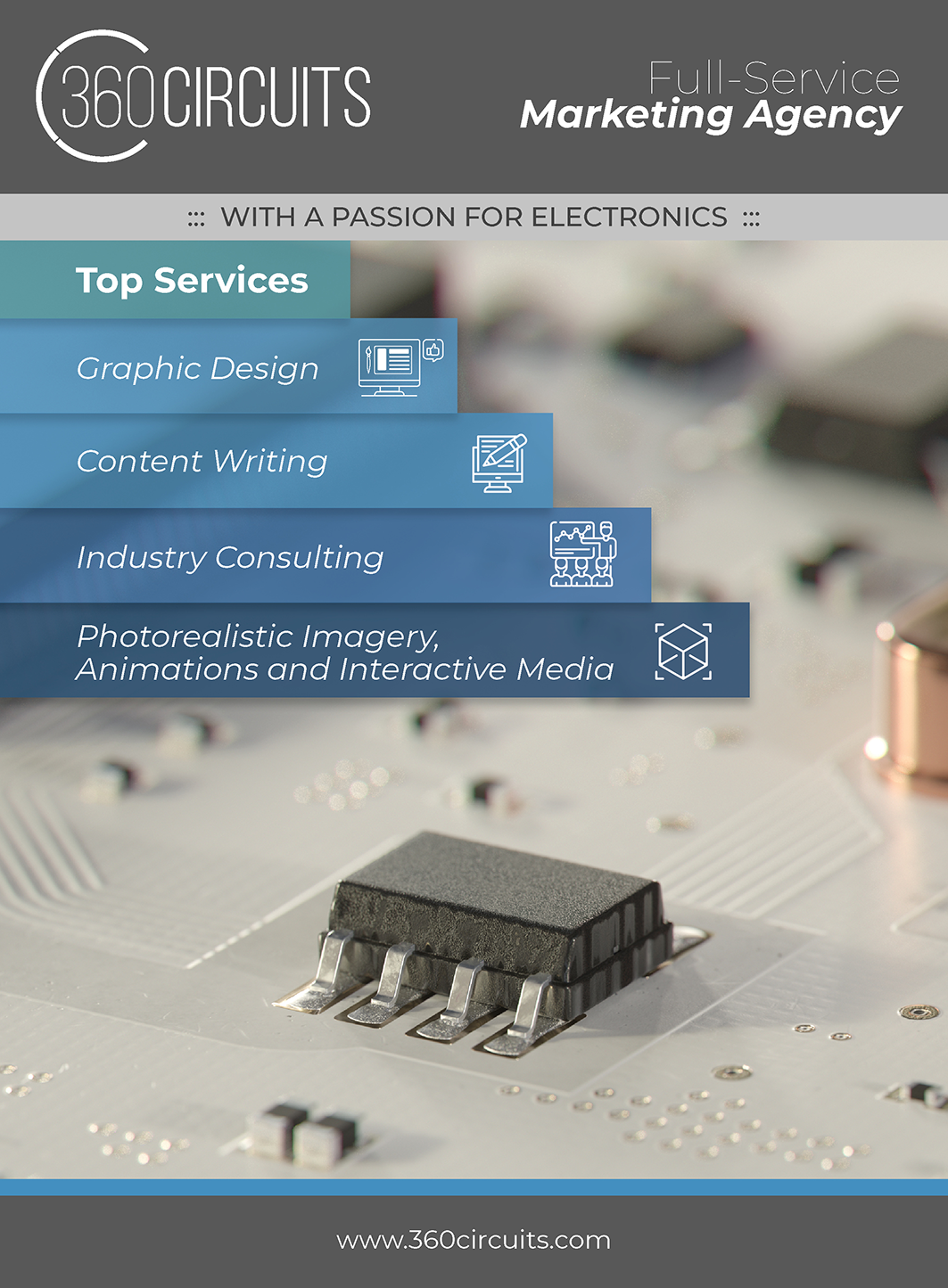


September 2025

This issue of PCD&F / CA is brought to you by:



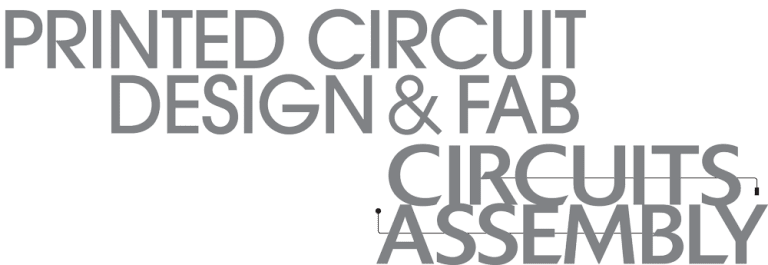
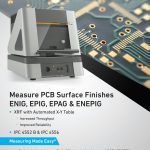


PCEA
PO BOX 807
AMESBURY, MA 01913
PCEA BOARD OF DIRECTORS
Stephen Chavez, CHAIRMAN
Susy Webb, VICE CHAIRMAN
Justin Fleming, SECRETARY
Anaya Vardya, TREASURER
MEMBERS
Jim Barnes
Michael Buetow
Tomas Chester
Douglas Dixon
Juan Frias
Richard Hartley
Matthew Leary
Charlene McCauley
Eriko Yamato
pcea.net
PUBLICATION
- PCD&F/Circuits Assembly digital.pcea.net
WEBSITES
- PCD&F pcdandf.com
- Circuits Assembly circuitsassembly.com
NEWSLETTER
- PCB Update pcbupdate.com
PODCASTS
- PCB Chat pcbchat.com
EVENTS
- PCB West pcbwest.com
- PCB East pcbeast.com
- PCB Detroit pcea.net/pcb-detroit
EDUCATION
- PCB2Day pcb2day.com
- PCEA Training pceatraining.net
- Printed Circuit University printedcircuituniversity.com
AWARDS PROGRAMS
- Service Excellence Awards circuitsassembly.com
- NPI Awards circuitsassembly.com

mike@pcea.net
frances@pcea.net
Jeffrey Beauchamp, Peter Bigelow, Robert Boguski, John Burkhert, Jr., Stephen Chavez, Mark Finstad, Geoffrey Hazelett, Nick Koop, Jake Kulp, Alun Morgan, Susan Mucha, Greg Papandrew, Chrys Shea, Jan Vardaman, Gene Weiner
production@pcea.net
nathan@pcea.net
frances@pcea.net
will@pcea.net
frances@pcea.net
mike@pcea.net
jacqueline@pcea.net
PRINTED CIRCUIT DESIGN & FAB/CIRCUITS ASSEMBLY is distributed without charge to qualified subscribers. To subscribe, visit pcdandf.com or circuitsassembly.com and click on Subscribe.
For changes or cancellations to existing subscriptions: subscriptions@pcea.net
PRINTED CIRCUIT DESIGN & FAB/CIRCUITS ASSEMBLY is published monthly by Printed Circuit Engineering Association, Inc., PO Box 807 Amesbury, MA 01913. ISSN 1939-5442. GST 124513185/ Agreement #1419617.
© 2025, by Printed Circuit Engineering Association, Inc. All rights reserved. Reproduction of material appearing in PRINTED CIRCUIT DESIGN & FAB/CIRCUITS ASSEMBLY is forbidden without written permission.


Technology Reigns (and Rains) at PCB West
PCB WEST has, since its inception, been the leading conference for printed circuit board design and manufacturing.
One reason for that is the intense focus on what the industry needs in terms of training. Another is, besides the educational aspects, it can be fun, surprising and occasionally even provocative.
Years ago, the conference founder Pete Waddell introduced a session called EDA Face-to-Face, where CAD vendors took to the stage and addressed questions straight-on from their users. As you might imagine, the back-and-forth sometimes got a little heated. One particular memory includes a couple users, fed up with the lack of bidirectional electronic data transfer, roiling the crowd with their public callout of the major ECAD companies for not modifying their tools to permit data in.
READ FULL ARTICLE
Siemens Launches PartQuest Design Enablement
MUNICH – Siemens Digital Industries Software in August introduced the PartQuest Design Enablement portfolio, a new digital environment aimed at enhancing how electronic component manufacturers connect with customers. Designed to streamline operations and deliver personalized digital experiences, the platform integrates product discovery, BoM intelligence, collaboration tools and digital support into one cohesive ecosystem.
Microchip Technology is among the first to adopt the platform, demonstrating its value during the Microchip MASTERs event. Siemens showcased how PartQuest Design Enablement, combined with Celus design automation and Microchip components, can accelerate the design process.
Siemens says the platform enables manufacturers to engage more deeply with engineers while improving operational efficiency and decision-making.
DSBJ to Launch High-End PCB Site
SUZHOU – Dongshan Precision Manufacturing (DSBJ), the parent of Multek, announced plans in August to invest up to $10 billion in a high-end printed circuit board campus designed to support next-generation computing and artificial intelligence applications. The initiative marks a push to enhance the company’s capabilities in advanced PCB manufacturing, crucial for high-performance AI chipsets and data infrastructure. The company didn’t disclose the site location, capacity or expected completion date.
The investment will go toward state-of-the-art facilities capable of producing complex, high-density PCBs tailored for demanding AI workloads. This move comes as China sees demand for advanced computing hardware, especially in light of US restrictions on Nvidia AI chip exports, which has fueled a secondary market for repair and maintenance.
DSBJ aims to position itself at the forefront of the AI supply chain by delivering the reliable, high-spec components needed for evolving technology stacks. While project specifics are still under wraps, the development is expected to boost local innovation, generate employment and reinforce the company’s role in the global electronics ecosystem.
Ventec Breaks Ground on Thailand Facility
AYUTTHAYA, THAILAND – Ventec International Group has officially broken ground on its first Southeast Asian manufacturing plant here. The 35,000-sq. m. site is expected to begin trial production in the first quarter of next year and reach mass production by the second quarter.
The site is located near Bangkok’s port and airport, and will produce copper foil substrates and adhesive sheets for high-performance applications, including automotive, aerospace and AI computing.

Avary Holding Greenlights Huai’an Park Expansion for PCB Capacity and AI
HUAI’AN PARK – Zhen Ding Technology said Avary Holding’s board in August approved a Huai’an Park expansion, committing roughly $1.1 billion (RMB 8 billion) through 2028 to boost high-end PCB capacity aimed at AI infrastructure.
The plan includes two new fabs and advanced equipment to scale MSAP, HDI and high-layer-count (HLC) production for servers, optical communications, humanoid robotics, smart vehicles and edge AI devices.
Avary is a subsidiary of ZDT. The Huai’an investment is an element of the group’s capex strategy and targets mid-to-long-term demand for high-precision, high-layer boards across the AI server and connectivity stack.
Kaynes Circuits Launches PCB Project in Tamil Nadu
THOOTHUKUDI, TAMIL NADU – Kaynes Circuits India has announced an investment of ₹49.95 billion ($570 million) to establish an electronic component manufacturing facility in Thoothukudi, Tamil Nadu. It marks the state’s first major foray into high-end PCB production.
The facility will produce advanced 74-layer PCBs, HDI and flexible boards, high-performance laminates, camera modules and wire harness assemblies. Projected to create around 4,700 jobs, the plant will help make Thoothukudi a hub for electronics and electric vehicles, situated near VinFast’s upcoming EV plant.
Industry experts say this anchor investment reflects a larger shift in India’s electronics strategy, moving from assembly toward deep-tech component manufacturing. It also aligns with the country’s growing component production initiatives under the government’s ₹22.9 billion investment plan.
Wright Industries Acquires Exception PCB
ANDOVER, ENGLAND – Wright Industries in August announced its acquisition of Exception PCB, returning the high-reliability printed circuit board manufacturer to British ownership. The company, now part of the Connexion Technologies group, means to reinforce the UK’s domestic manufacturing base.
“Bringing Exception PCB back from Asia into UK ownership strengthens our national manufacturing resilience,” said Craig Wright, chairman and CEO, Connexion Technologies. “It aligns with UK Government objectives and opens new opportunities to innovate, invest and lead.”
“This is a proud moment for British engineering,” added Kamal Berberi, general manager, Exception PCB. “Joining Connexion Technologies will allow us to expand our strategic capabilities and customer offerings.”
Read Full ArticlePolymatech Completes PCB Fab Plant in Estonia
CHENNAI – Polymatech Electronics last month announced the commissioning of its state-of-the-art printed circuit board manufacturing facility in Estonia.
The new facility features a roughly 10,000-sq. ft. cleanroom equipped with cutting-edge machinery, capable of producing up to 50,000-sq. m of multilayer high-density interconnect (HDI) PCBs annually.

Wipro Launches Electronic Materials Division
NEW DELHI – Wipro Infrastructure Engineering (WIN) has unveiled a new business division, Wipro Electronic Materials, aimed at manufacturing high-performance base materials for PCBs. The move marks a strategic expansion into the electronics manufacturing space.
As part of this initiative, WIN will invest approximately $60 million to build a copper-clad laminate (CCL) facility in Karnataka. The plant is expected to generate around 350 jobs and will have the capacity to produce over 6 million sheets of copper-clad laminates and associated pre-impregnated materials annually.
The investment aligns with India’s growing push for electronics manufacturing self-sufficiency and represents a step toward diversifying its advanced materials capabilities.
VVDN Expands with New UAE EMS Facility
FREMONT, CA – VVDN Technologies has announced the establishment of a new manufacturing facility in the United Arab Emirates, expanding its global footprint to serve customers across the United States, Europe and the MENA region. The site, scheduled to become operational within four weeks, reinforces the company’s backward integration strategy.
The UAE facility will support PCB assembly, automated product assembly, mechanical manufacturing and testing and validation, covering sectors including telecom, MedTech, automotive, cameras and industrial automation. By adding capacity in the region, VVDN aims to accelerate time-to-market.
Gourab Basu, senior vice president, manufacturing commercials, said the UAE expansion reflects VVDN’s commitment to meet rising global demand. “Positioned as a gateway between the East and West, the UAE enables seamless access to diverse markets,” he noted. “This expansion reflects VVDN’s dedication to bringing manufacturing closer to its global clientele while meeting the increasing demand for high-quality, commercially competitive solutions with a quick-turnaround.”
VVDN Acquires GGS Engineering
FREMONT, CA – VVDN Technologies has acquired GGS Engineering Services, expanding its engineering research and development (ER&D) portfolio across the automotive, MedTech and aerospace sectors. GGS brings more than two decades of expertise in mechanical design, analysis, simulation and technical publications.
The acquisition grows VVDN’s capabilities in innovative product development, cost optimization and scalable engineering talent. VVDN aims to address industry demands ranging from vehicle electrification and cabin design to medical device precision engineering and aerospace component development.
GGS will continue to operate under the VVDN umbrella, with its leadership team remaining in place. VVDN CEO Puneet Agarwal emphasized that the acquisition strengthens the company’s global value proposition and positions it to expand aggressively in the multi-billion-dollar ER&D market.
Cicor Finalizes MADES Acquisition, Expands A&D Reach in Europe
BRONSCHHOFEN, SWITZERLAND – The Cicor Group has completed its acquisition of MADES SAU, a Málaga-based electronics manufacturer formerly owned by the Latecoere Group.
With this move, Cicor builds its presence in the European aerospace and defense (A&D) sector, while making its strategic entry into the Spanish market. MADES, which employs around 100 people and generated EUR 29 million ($23 million) in revenue last year, brings additional capabilities in mission-critical electronics and industrial applications. Cicor emphasized that the acquisition will not affect its yearly sales guidance of CHF 620 million to 650 million ($754 million to $774 million) and is not expected to be impacted by recent US tariff changes.
PCD&F
Amphenol will acquire Trexon for about $1 billion.
Electroninks named Insulectro distributor of its MOD inks for additive manufacturing and advanced semiconductor packaging in North America.
HyProMag USA has signed a feedstock supply and site share agreement with global electronics recycler Intelligent Lifecycle Solutions.
Ji’an Shengyi Electronics is investing 20 billion yuan ($2.8 billion) in an intelligent manufacturing high-layer-count circuit board project.
Kinwong will invest about $700 million to expand high-end PCB capacity, upgrading its Zhuhai site.
Read Full ArticleCA
AIM Solder appointed Covermat distributor in Thailand.
Amber Enterprises plans to invest over ₹800 crore ($91 million) to build a copper laminate plant in Mysuru under India’s electronics component manufacturing plan.
Amber Group, an Indian EMS, is set to acquire a 40% stake in Unitronics, an Israeli maker of industrial automation and control systems.
Apple in August announced an additional $100 billion commitment to its American Manufacturing Program as part of a total $600 billion investment to expand US production and supply chain operations.
ASMPT and SMarTsol Technologies have opened an advanced competence center in Guadalajara.
Read Full Article
PCD&F
AT&S CFO Petra Preining will step down from the executive board this month.
Agile Circuit Technology Group announced a new executive team to lead its unified UK PCB manufacturing operations: CEO Dean Curran, CFO Malcolm Millar, COO Mark Aitken, CCO David Riddle and CPO Michelle Kirk.
LiveWire named Justin Fleming senior printed circuit board designer.
TTM Technologies named Edwin Roks president and chief executive. He succeeds Tom Edman, who is retiring.
Summit Interconnect named Lianna Marrero account manager.
CA
Creation Technologies named Farid Anani VP global manufacturing engineering.
Flex promoted Frank LaBarbera to senior director, business development.
Indium Corp. promoted Andy Seager and Karthik Vijay to key leadership roles supporting growth across the EMEA region.
Generac promoted Jim Barnes to executive vice president, global supply chain.
Koh Young named George Hsu managing director of Koh Young Taiwan.
Read full article
FGPA Horizons Conference to Colocate with PCB East 2026

PEACHTREE CITY, GA – FPGA Horizons will colocate its technical conference and exhibition with PCB East 2026 at the DCU Center in Worcester, MA, next spring.
The FPGA Horizons technical conference will take place Apr. 28 – 29, 2026, concurrent with the PCB East technical conference, which takes place Apr. 28 – May 1.
The exhibition takes place Apr. 29 at the DCU Center.
Read Full Article
PCB West Keynoter Wants to ‘Make it Rain’
PEACHTREE CITY, GA – Water may be the enemy of electronics, but technology could be the salvation for eliminating droughts.

That’s the thesis of Jackson Schultz, head of engineering at Rainmaker Technology, who will keynote PCB West this fall. Schultz heads the design and integration of Rainmaker’s autonomous cloud seeding system, which works with nature to encourage precipitation, provide more freshwater, and mitigate drought and water scarcity globally. Rainmaker provides water for farms, watersheds and ecosystems, fortifying growth and stewarding the natural world. The company designs, builds and deploys weather-resistant drones, advanced meteorological radar systems, and atmospheric analysis software to achieve this. The pioneering platform uses a range of atmospheric sensors, flight controls, lidar, radar and other technologies.
Rainmaker currently serves government customers in multiple US states and countries around the world.
Read Full ArticleUsers to Lead ‘AI in Electronics’ Panel at PCB West
PEACHTREE CITY, GA – A special free panel session on “What Users Really Think of Today’s AI” will take place at PCB West on Oct. 1 at the Santa Clara (CA) Convention Center starting at 10 a.m. PST.
The one-hour panel, which is free to all conference and exhibits-only attendees, will discuss how the promise of AI is transforming electronic design and manufacturing, but also explore why adoption is harder than first expected.
The panel will be moderated by Phil Marcoux, an electronics industry expert with over 50 years of experience in electronics manufacturing. Panelists include: Alex Zannos of Pensa Technologies (design), Matthew Leary of Newgrange Design (design), Farzam Moshtagh of Epoch International (assembly) and Jackson Schultz of Rainmaker Technology (assembly).
Read Full ArticlePCB East 2026 Booth Space Now Open to Any Exhibitor
PEACHTREE CITY, GA – The exhibition floor for PCB East 2026 is now open to any prospective exhibitor, the Printed Circuit Engineering Association (PCEA) announced. The exhibition takes place Apr. 28 at the DCU Center in Worcester, MA, a new location for PCB East.
Attendance for the PCB East 2025 exhibits rose nearly 4% year-over-year, PCEA added. Attendance among the exhibits-only category was up 15% from a year ago.
Concurrently, the four-day technical conference will take place Apr. 27 – May 1, 2026.
Read Full ArticlePCEA to Hold Annual Meeting at PCB West
PEACHTREE CITY, GA – PCEA will hold its annual meeting on Sept. 30 at the Santa Clara (CA) Convention Center during the PCB West trade show.
PCEA will review its key programs, including its Certified Printed Circuit Engineering training and its chapter development and membership.
The meeting is open to all Association Members and interested parties.
Also, annual awards for leadership and membership will be presented.
Fall PCB Design Training Classes Scheduled
PEACHTREE CITY, GA – PCEA Training this fall will hold two scheduled sessions of its industry-leading Certified Professional Circuit Designer (CPCD) training and certification program.
Upcoming class dates are:
- Sept. 12, 19, 25 Oct. 10, 17
- Nov. 3, 10, 17, 24, Dec. 1
The five-day instructor-led course is for printed circuit engineers, layout professionals and other individuals currently serving in the design engineering industry or seeking to get into it.
Read Full ArticleASSOCIATION NEWS
Certification. The following recently passed the PCEA Certified Printed Circuit Designer exam:
- Devin Hart
- Joseph Thomas
Conferences. Abstracts for next year’s PCB East technical conference are due Oct. 3. The conference, the largest of its kind in New England, takes place next spring in the Boston suburbs and focuses on training and best practices for printed circuit board design engineers, electronics design engineers, fabricators and assemblers. Submit abstracts at https://pcbeast.com/abstract-submission-guidelines.
Networking. The PCEA Discord server brings together engineers and designers from around the world on a private channel to discuss technical questions and career opportunities. To join, contact PCEA. Recent conversations covered implementation of ESD rings on circular boards, migrating designs between CAD tools, block diagrams and power budgets, and whether there should be an industry-standard definition of each level of “PCB Designer.”
CHAPTER NEWS
Richmond, VA. We held a casual gathering in August to help local hardware folks connect and start shaping what this community could become. We are looking for input on future technical talks, shop tours, educational sessions (virtual or in-person), or collaborative projects. Contact: Michael Burns.
Portland, OR. Our Oct. 23 meeting is scheduled at the Portland State University Electronics Prototyping Lab. Contact: Stephan Schmidt.

Is Thinner Core Technology Ahead for Tomorrow’s CPU Substrates?
AUSTIN, TX – Larger substrate sizes for AI, network switch and server CPUs are driving the development of new package structures as well as materials and processes for substrate fabrication. One of the major concerns with a large substrate is warpage; other concerns include material sets to support the larger body size, including thermal interface materials to help dissipate heat.

That’s according to TechSearch International’s latest Advanced Packaging Update. The 100-page report examines these trends and includes a section on thermal interface materials (TIMs) under development for large-body packages. (more)
Hot Takes
The DDR4 market is set to remain in a persistent state of undersupply and strong price growth through the second half of this year, and rigid server orders are crowding out supply for the PC and consumer markets, forcing PC OEMs to accelerate DDR5 adoption. (TrendForce)
Revenue among publicly listed Taiwanese-based PCB fabricators in July rose 8% year-over-year. (TPCA)
Some 88% of US electronics supply chains rely on foreign inputs, with significant upstream exposure to Chinese sub-components across allied trade routes. (Altana) (more)


Navigating Variable Costs Amid Tariff Turbulence
Riding out tariff turmoil takes more than watching the balance sheet.
I took a few economics courses in college, but I’m no Adam Smith. And I have predicted the future reasonably accurately, but no one would mistake me for a prophet. What I do understand, however, after nearly 50 years in manufacturing, most spent as a corporate president, is the impact of costs on profitability. More specifically, the impact of dramatic and unpredictable rising costs on a business’s ability to thrive, survive or founder.
Cost accountants typically separate expenses into two overall buckets: fixed costs and variable costs. Fixed costs may include items such as insurance, occupancy, benefits and so on. Variable costs include materials, supplies, labor, etc. Within a couple of years in manufacturing, however, I realized that in the real world only a small portion of costs are fixed, and the majority are truly variable. While all costs must be watched, monitored and managed, variable costs are the ones that make or break a balance sheet and income statement.
Under “normal” conditions, managing costs in a business, especially in a manufacturing business, is challenging. Too much scrap adds to costs, just like better-than-expected yield helps reduce them. Unplanned maintenance or a vendor’s larger-than-anticipated price hike can and do happen in “normal” times. The offset is to prudently increase pricing by balancing the need for solid margins and satisfying customers with good value and a good product.
Read Full Article
Is Your Inventory Process Wrecking Your Company?
Lessons from a chaotic EMS warehouse.
Many years ago, after punching out of a negative-culture electronics manufacturing services company, I interviewed with a smaller, family-run EMS. After numerous phone interviews, I flew to their facility and met with the president and the newly hired COO. After spending some time addressing a Q-and-A session in the president’s office, we took a facility tour, starting in the warehouse.
We never made it to the SMT lines before things went off the rails. What happened?
In the warehouse, the team demonstrated a robust incoming inspection process. Well done! But it quickly became clear that chaos ruled the day once kits began to be pulled.
Read Full Article
Power Circuits: An Island POV on PCB Design
Draw the map and make it happen.
As the saying goes, Rome wasn’t built in a day.
That doesn’t refer to the city-state as we know it, but rather the empire as it was back in the day for my hometown of Augsburg, Germany. Located where the Wertach River joins the Letch River on its way to the Danube, which flows from the Black Forest to the Black Sea. The Danube is a long river starting in Germany and ending at the border between Romania and Ukraine.
You might be wondering what all of this has to do with placing components on a PCB.
Read Full Article
Navigating Collaboration and Confidentiality in PCB Design
Securing PCB design collaboration through tiered access controls and secure cloud environments.
In today’s interconnected world, engineering teams are increasingly global, collaborating across time zones and continents to bring complex products to market faster. This collaborative spirit, while driving innovation, introduces significant security challenges, particularly in sensitive fields like printed circuit board (PCB) design. Protecting intellectual property and customer data is paramount, demanding sophisticated solutions that balance accessibility with stringent security.
Let’s explore the evolving landscape of security in PCB design, from common collaborative scenarios to the critical demands of high-stakes industries.
1. Scenario one: Global teams, one PCB design. Picture this: A single, complex PCB design being developed simultaneously by engineers in Bangalore and Phoenix. Using today’s advanced technologies, the project assigns three PCB designers working simultaneously in this same design layout in one eight-hour shift. The advantage of this team approach is that the project gets 24 manhours of effort out of a single eight-hour shift. No one is required to work overtime, leading to a good work-life balance. Then, the team in Arizona hands off this same design to its international cohort: three designers located in a time zone 12.5 hours away.
Read Full Article

Materials Innovation Beneath the Surface
Everything is changing in high-performance substrates, from materials technology to engineering priorities.
Materials science is a quiet contributor to high-performance electronics, playing a huge yet mostly unseen role, enabling everything from smartphones and automotive systems to 5G radio access, communication infrastructures and high-performance computing systems. That conventional-looking circuit board, which the user may never see or think about, is anything but ordinary underneath. While ICs sit serenely on the surface, the processes going on inside couldn’t happen without the engineering that created the substrate beneath. Demand for improvement is ever-present, and many avenues may be explored in search of a solution.
At microwave and RF frequencies, managing signal energy is a critical imperative that directs substrate-engineering choices. Signal propagation repeatedly realigns the dielectric’s molecular dipoles, converting a proportion of the energy into heat that dissipates into the ambient environment. The effect is small, and general-purpose resins that tend to have a large dipole moment cause minimal losses at low frequencies. At GHz frequencies, however, the losses are significant and must be addressed.
Materials science has produced more suitable resins, engineered for low polarization to preserve energy within the signal. Ultimately, PTFE – which has effectively zero dipole moment – has the lowest loss of the materials currently available. Moreover, introducing extra materials to the resin, such as ceramic fillers, gives extra control over properties like thermal performance. Care is needed to ensure particles are of consistent size and evenly distributed throughout the material, however.
Read Full Article
Tracking Giants: Inside the World’s Top PCB Fabricators
From Shenzhen to Southeast Asia: The changing map of PCB production.
by Dr. Hayao Nakahara
Accurately investigating the revenues of the world’s largest PCB fabricators is confounding: Each year is filled with mergers and acquisitions, and no public records exist for a number of fabricators because they are either privately owned or part of large corporations which do not disclose the revenues of their PCB operations. As years go by, more “estimates” creep in. As a result, the author’s confidence in the data diminishes each year. Nevertheless, the NTI-100 continues to reflect the status of the global PCB industry; its size and market trends can be deduced from the fabricators listed.
For clarification, while ranked lists often refer to the 100 largest, in this case, “100” refers to companies with printed circuit board manufacturing revenues over $100 million. A record 159 companies reached that mark in 2024, versus 134 companies in 2023.
As usual, many organizations and companies contributed to this year’s rankings, directly and indirectly. The author would like to thank them. The author is entirely responsible for any errors – there are doubtlessly many, unfortunately.
Read Full Article
Cold Solder Joints
Why they occur, and what to do about them.
by Akber Roy
Soldering, the process of joining two or more metals through the application of heat, has been around for millennia, and is the primary means of making physical and electrical connections between the leads of electronic components and the metal pads on a printed circuit board. To make the connection, the solder must be molten so that it can wet the metal surfaces that need to be connected. When solder cools enough to solidify, it forms a joint, making the connection. Reaching a specific temperature (the precise temperature varies depending on the alloy used) is essential, however, because unless the solder melts to its liquidous form, it cannot wet to the mating surfaces. Solder that doesn’t melt, even if present, is referred to as “cold.” Even if the solder joint appears fine visually, it lacks the strength and integrity of a proper joint and could fail.
Here, we focus on understanding cold solder joints, what causes them, and design and manufacturing practices to prevent them.
Solder is simply an alloy, composed usually of tin with other metals, depending on the desired properties, melting point or other characteristics. It can contain copper, silver, lead, antimony, indium, bismuth or other metals. Regardless of the attachment process used – surface mount technology (SMT) or through-hole technology (THT) – soldering is integral to the assembly process.
Read Full Article
Where Market Intelligence Meets Distribution
Component Dynamics is showing how independent distributors can guide their customers in tricky times.
by Mike Buetow
It’s well-established that the Covid component crisis forced the electronics manufacturers to rethink how they managed their supply chains.
The lesser-told story, however, is how it also reoriented distributors, pushing them to reposition their linecards and services to adapt to the changing market.
Those lessons were not lost on Component Dynamics, an independent supplier focused on supplying high-quality electronic component solutions for obsolete and hard-to-find parts. But while the company might scour the globe on behalf of a customer in need of a handful of tantalum capacitors, it also provides valuable market intel, boosting those firms’ predictive capabilities.
Read Full Article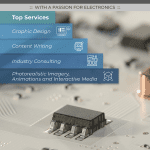

Smart Factory Evolution: Innovations in Automated Production
Maintaining stable production through error and predictive detection.
by Akihiro Senga
As industry shifts from the Internet of things, entailing machine-to-machine (M2M) and person-to-person communication, to the Internet of everything, enabling communication between people and things on a global scale, it is necessary to build more advanced systems by integrating items beyond just things, that include people, processes, and data. For example, changes in automotives and the use of VR and AI are revealing new possibilities.
Smarter factories require production systems with integrated data linkage and automation (Figure 1). Systems that permit devices to share data and automatically solve problems are being put to practical use as productivity-enhancing measures. Considering this, Fuji Smart Factory’s smart solutions are taking the lead toward this level of automation.



The Growing Importance of DfX in AI Hardware
SMTAI Women’s Leadership Program highlights how technology shifts lead to greater opportunities for those with specialized skills.
by Priyanka Dobriyal, Ph.D.
The need to develop new technologies to meet the demands of artificial intelligence (AI) is increasingly urgent. The manufacturing of the necessary hardware at scale presents its own set of significant challenges, however, including highly skilled labor, specialized equipment requirements, automating complex tasks, supply chain disruptions and quality control issues. Given these manufacturing challenges, applying the principles of design for excellence (DfX) from the beginning of the design process is essential.
To illustrate, consider a specific example: the development of new interconnects, which are crucial for connecting the various components of an AI system. Interconnects are an example of the biggest bottleneck for AI performance. As electrical solutions near their physical limits, silicon photonics offer an opportunity to break through those limits by replacing traditional electrical interconnects with light. This permits significantly higher bandwidth, lower power consumption, reduced latency and improved thermal management, as photons inherently generate less heat and can transmit more data than electrons.
For advanced silicon photonics, the DfX challenges are particularly complex. The tight integration of optical and electronic components inside a single package, or even on a single chip, introduces a multitude of new variables for designers to consider. Design for manufacturing (DfM), for instance, must account for the precision needed to fabricate waveguides, modulators and photodetectors alongside traditional CMOS transistors, without disrupting the highly tuned CMOS manufacturing flow. This involves new processes, materials and devices, leading to challenges in design for test (DfT) as well, as traditional electrical tests may not be sufficient to verify both the optical and electrical performance, instead requiring the development of advanced photonics and electro-optic wafer-level testing. Furthermore, design for assembly (DfA) becomes more complicated due to the precise micron-scale fiber-to-chip coupling required for signal input and output – far more precise than electrical contacts – which can be sensitive to environmental factors and mechanical stress, driving the adoption of higher-accuracy assembly tools and precision manufacturing flows. These factors collectively increase the complexity of the entire design and manufacturing workflow.
Read Full Article
Optimizing SMT: GMP, SMED and TPM in Action
Focusing on fundamentals to drive world-class quality and throughput.
Most electronic products incorporate surface mount technology (SMT). Consequently, it is a critical process to monitor in terms of quality and cost. Lean manufacturing principles provide a solid foundation for eliminating the variation that can create defect opportunities as well as methodologies for improving throughput. Lean manufacturing-related philosophies in SigmaTron International’s facility in Tijuana, Mexico, include good manufacturing practices (GMPs), the single-minute exchange of die (SMED) methodology and total productive maintenance (TPM).
GMP in SMT: The basis of quality. GMPs are a set of guidelines that ensure products are manufactured and controlled consistently, following quality standards. In the context of SMT, GMP areas of focus include:
- Incoming control and component handling. Ensure that all components meet specifications before entering the line. This includes visual inspection, moisture verification (for moisture-sensitive components) and proper handling to avoid electrostatic discharge (ESD) damage.
- Inventory and warehousing management. Maintain strict control over component inventory, including FIFO rotation (first in, first out) and storage in controlled environmental conditions to prevent degradation of materials, especially solder paste and sensitive components.

What We Talk About When We Talk About Drones
Or how to follow the No Outburst in the Face of Idiocy rule.
The dearly beloved, firm believers and associated hangers-on were reverently assembled to begin a Teams meeting or, rather, an inquisition.
Amid forced pleasantries, while we captives killed time awaiting latecomers, they appeared. Like viruses. One after the other, after the other: The Swarm. Blackened screens with names, resembling any college lecture, with the students doing their utmost to remain inconspicuous. Except the disembodied names on the screens concealed adults, not camera-shy undergrads. One said Ted’s AI Notetaker. The second said Claire’s AI Notetaker. Then Evan’s. Then Irene’s. And Muhammad’s. Plus Sanjay’s. And Chin’s. Then Dylan’s. Always a Dylan in 2025. We live in accursed times.
All that the Swarm lacked was a soundtrack blaring “Flight of the Valkyries.”
Read Full Article

PCD&F

Adafruit SnapBoard Prototyping Frame
SnapBoard modular prototyping frames offer reusable, snap-fit solution for securely holding multiple PCBs during development and testing. Designed for tool-less installation. Enables fast module swaps without soldering or screws. Interchangeable mounts support various board sizes. Built for 3-D printing with standard FDM printers. Ideal for rapid iteration workflows.
Adafruit Industries

Hirose BK11 Series Connectors
BK11 series multi-power hybrid FPC-to-board connector delivers a footprint up to 46% smaller than conventional designs. Supports two main power contacts at 4A per pin, four sub-power contacts at 2.5A per pin and 10 signal contacts. Flexible power configurations suit variety of portable electronics. Fully armored housing, wide self-alignment range and molded plug-and-receptacle design. Has 0.35mm pitch, 1.9mm width, 5.33mm length and 0.6mm stacking height.
Hirose
CA

Aven Inspector UV Magnifying Lamp
InspectorUV magnifying lamp combines 5-diopter (2.25x) magnification with dual-mode LED lighting – standard white light and ultraviolet – for conformal coating inspection. Integrated high-definition camera captures and streams crisp images and video directly to a PC via USB, for documentation, training, remote collaboration, and quality control. Designed for cleanroom applications, forensics, and other detail-critical industries, Features 6″ glass lens and smooth articulating arm for ergonomic comfort and flexible positioning. ESD-safe construction.
Aven

Indium WS-910 Flip-Chip Flux
WS-910 water-soluble flip-chip dipping flux is said to be compatible with molded and capillary underfill. Offers high tackiness for a flip-chip flux, for holding large die in place during reflow, and minimizes non-wet open defects and cold joints. Promotes solderability onto a range of surfaces, and ensures yields through consistent dipping performance over extended periods. Cleans with pure room-temperature deionized water. Is designed for Pb-free applications and suitable for all high-Sn solders. Compatible with a variety of conventional ultrafiltration and modified ultrafiltration.
Indium Corp.


In Case You Missed It
BGA Inspection
“Structure Light Measurement for a BGA Packaged Chip with High-Precision and Large Field-of-View”
Authors: Jianfeng Zheng, et al.
Abstract: Ball grid array (BGA) packaging is one of the mainstream chip packaging modes. The deviation of solder ball height can significantly affect the safety and reliability of packaged chips and may even lead to chip failure. To efficiently and accurately measure the height of solder balls on large-sized square BGA chips, a large field-of-view (FOV) and high-precision structured light measurement system is constructed in this paper. The influence of fringes with different contrast and gamma nonlinearity on three-dimensional (3-D) reconstruction height is simulated to determine the boundary conditions of fringe quality. Based on these boundary conditions, the projection clarity and spot shape of the oblique projection lens are optimized according to the Scheimpflug principle. This effectively solves the problems of an unbiased axis and low utilization of projection in traditional structured light projection lenses and enables high-precision fringe projection on large-sized square BGA chips. Aiming at the abnormal height measurement problems caused by the high reflectivity and occlusion of the solder ball, an improved fusion algorithm is proposed, which can accurately fuse height data from multi-directional 3-D reconstruction data. The measurement system has an FOV of 95mm x 95 mm, a measurement accuracy of 1.4µm for a standard plane, and 4.7µm for BGA solder balls. The results show that this system can perform high-precision detection of the height of solder balls on BGA chips, especially large-sized square chips. (Applied Optics, August 2025, https://www.researchgate.net/publication/393886013_Structure_light_measurement_for_a_BGA_packaged_chip_with_high-precision_and_large_field-of-view)
Read full article


